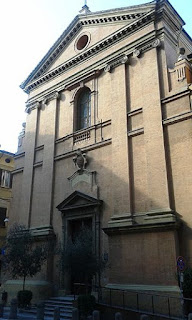Controversial doctor furthered the use of the microscope
 |
| Marcello Malpighi's willingness to experiment helped him make important discoveries |
Malpighi became a physician and biologist who developed experimental methods for studying human anatomy. As a result of his work, microscopic anatomy became a prerequisite for advances in the fields of physiology, embryology and practical medicine.
In 1646, at the age of 18, Malpighi went to study at Bologna University. Although both of his parents died when he was 21, he was fortunately able to continue with his studies.
He was granted doctorates in both medicine and philosophy in 1653 and appointed as a teacher by the university, despite not having been born in Bologna. He immediately set out to continue with his studies of anatomy and medicine.
In 1656, Ferdinand II of Tuscany invited Malpighi to be professor of theoretical medicine at the University of Pisa. After moving to Pisa, he developed what was to be a lifelong friendship with the mathematician and naturalist Giovanni Borelli.
Malpighi questioned the medical teaching at Pisa and tried experiments on colour changes in blood and took a fresh look at anatomical, physiological and medical problems of the day. He returned to the University of Bologna in 1659 because of family responsibilities and his own ill health.
 |
| Malpighi's De Pulmonibus Observationes Anatomice examined the lungs in detail |
Because of the hostile environment he was experiencing in Bologna, Malpighi accepted the offer to become professor of medicine at the University of Messina in Sicily in 1662. He was encouraged to further his career by Visconte Giacomo Ruffo Francavilla, a former student who was a patron of science. Malpighi carried on studying while teaching and practising medicine. He identified the taste buds and was the first to see red blood cells.
Malpighi returned to Bologna in 1667, where he studied the microscopic subdivisions of organs such as the liver, brain, spleen and kidneys and of bone and the deeper layers of the skin.
His work attracted the attention of the Royal Society in London, who began to publish his findings. In 1669 Malpighi became the first Italian to be named an honorary member of the Royal Society.
He also conducted many studies of insect larvae, the most important of which was his investigation in 1669 of the structure and development of the silkworm.
In 1684, opponents of his work set fire to his villa, destroyed his microscopes and his books and papers. However, in recognition of his standing and scientific achievements, Pope Innocent XII invited him to Rome to be his personal physician. In Rome he was honoured by being named a count, and was elected to the College of Doctors of Medicine. He remained in Rome until his death of apoplexy (an old-fashioned name for a stroke) in 1694 at the age of 66. In accordance with his wishes, an autopsy was performed on his remains.
Malpighi was buried in the church of Santi Gregorio e Siro in Bologna. There is now a marble monument to the scientist in the church with a Latin inscription remembering ‘his great genius, honest life, strong and tough mind and daring love for the medical art’.
He can be regarded as the first histologist and the founder of microscopical anatomy. His name has been given to physiological features such as the Malpighian corpuscles, Malpighian pyramids of the kidneys and the Malpighian skin layer.
 |
| Malpighi's statue in the main square of Crevalcore |
Crevalcore, where Marcello Malpighi was born, is about 40km (25 miles) to the northwest of Bologna on the border with the province of Modena and is a stop on the Bologna-Verona railway line. The town centre of Crevalcore still has its 18th and 19th century layout and there is a bronze statue of Malpighi in the town’s main square. The countryside around the town is dotted with beautiful country residences of the Bolognese nobility, such as the Castle of Palata Pepoli, the Castle of Galeazza Pepoli, the Palazzo Bevilacqua Ariosti and the complex of Villa Ronchi.
Hotels in Crevalcore from Booking.com
 |
| The Church of Santi Gregori e Siro in Bologna |
The Church of Santi Gregorio e Siro in Bologna, where Marcello Malpighi is buried, is a Renaissance style building in Via Montegrappa in the centre of Bologna. Initially it was the Church of San Gregorio, but when the nearby Church of San Siro was demolished, the names of the saints were combined. The church was damaged by an earthquake in 1780 and rebuilt to the design of the architect Angelo Venturoli. The interior has ceiling frescoes by Luigi Samoggia and Alessandro Guardassoni.
Find a hotel in Bologna with Tripadvisor
Also on this day:
1749: The birth of librettist and entrepreneur Lorenzo Da Ponte
1872: The death of revolutionary hero Giuseppe Mazzini
1900: The birth of architectural sculptor Corrado Parnucci
No comments:
Post a Comment